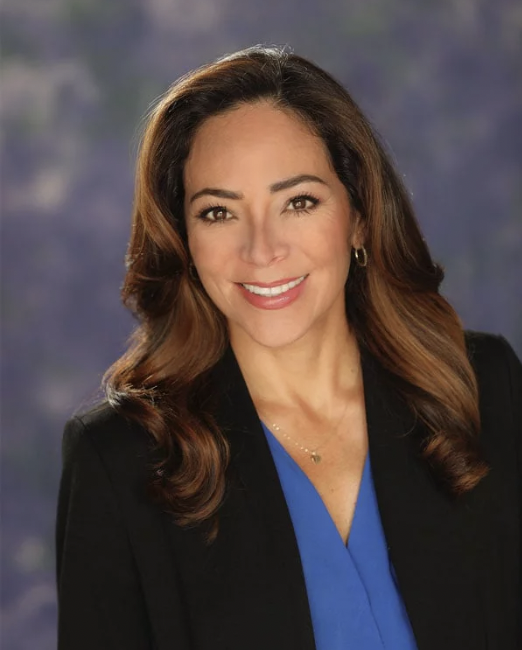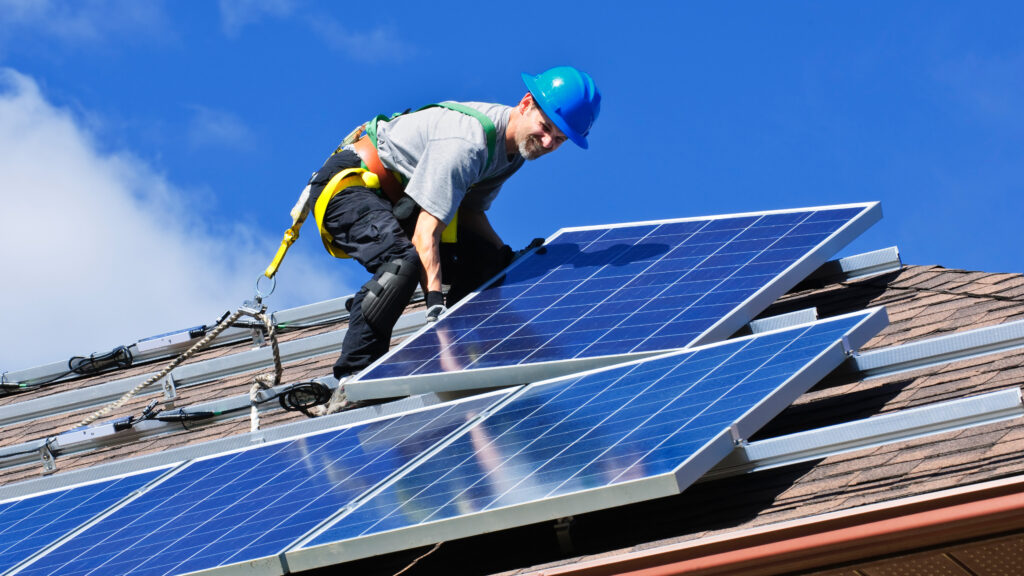By Nathan Crabbe, The Invading Sea
The following Q&A was conducted with Duanne Andrade, executive director of the Solar and Energy Loan Fund (SELF). SELF joined in coalition with two other Florida-based nonprofits — Solar United Neighbors and The Nature Conservancy in Florida — to apply for funding through U.S. Environmental Protection Agency’s Solar for All program. In April, the EPA announced that the coalition – known as Florida Solar for All – was being awarded $156 million. This interview has been edited for length and clarity.
Could you tell us a little bit about SELF and the kind of work that you do in Florida?

SELF is a nonprofit community development finance institution (CDFI) and also a green bank. … One-hundred percent of our activity has been focused on advancing access to credit for (low-and-moderate income) homeowners to be able to benefit from resilience, energy efficiency and clean energy technologies that would be otherwise unavailable to them because of the upfront costs that it takes to participate in those benefits. …
We focus on providing capital for unsecured loans, small loans that would cover the basic things that are needed in Florida. Those include roof replacements so that people won’t lose their insurance and protect their homes against increasing storms, high-efficiency air conditioners that will save money but also improve their quality of life and health — and then, of course, the solar piece, which is ironically the piece that we struggled with the most, even though we’re called the Solar and Energy Loan Fund. …
Solar and Energy Loan Fund’s ultimate goal was to transition people to solar. … But, as you probably know, we don’t have regulations here that incentivize or reward rooftop solar. For the last 13-14 years that we’ve been in operation, we have focused on basically getting low-and moderate-income communities ready for solar … so that now, in this historic moment, with the funding that we have from (the EPA), we can actually now move the needle on solar. …
When I talk about us providing access to unsecured capital for low-and-moderate-income homeowners, I want to stress the fact that we do these loans based on the ability to repay, not on credit scores. And that is really what makes us stand out. … We’ve created our own methodology to be able to provide access to capital to people who are not deemed credit-worthy by the banks in the traditional system, so that we can really include these communities that have been left behind.
Obviously, the big news has been the $156 million that the EPA has awarded your group and the other nonprofits. Could you tell us a little bit about exactly how that money is going to be spent?
Yes, so we applied for $250 million and we got $156 million, which was kind of the top-tier award other than multi-state applications. Our model was based on keeping it simple, accessible and scalable. ….

It’s all rooftop solar. We have a project management component, so we have approved contractors that will do the work. We will verify, supervise and do the project management, and then we pay the contractor directly once the job is done. And then we basically monitor and support the low-income households that receive this.
It’s an income-based program. We designed a model by which very low-income people will get a 100% grant. The second tier gets a deep subsidy. … Working-class Americans — our frontline workers, teachers, police officers, that kind of income range — will have access to very low-cost capital with a small subsidy. … Everybody achieves a minimum of 20-25% savings.
The whole goal of the EPA is that of all these funds, some of it gets granted to make sure that low-income (Floridians) don’t get left behind. But then we create revolving loan funds in perpetuity. So about 40% of the funds will revolve back, hopefully over time, and we’ll create a revolving loan fund in perpetuity.
When can people start applying and how will they be able to do so?
We will have a centralized platform that will be called the Florida Solar for All platform. It will be available through SELF’s website, through (Solar United Neighbors’) website and also local government partners and other community-based (organizations). …
I would say (it’s going to be ready in) early 2025, just because it’s going to take a little bit of time for us to set everything up. … And, by the way, it’s all residential. We’ve gotten a lot of community centers, churches and all that reach out for Solar for All. No, it’s all residential. …
How do you see this funding impacting individuals and families? How do you see it impacting their finances, and how they are able to afford energy?
No. 1, it’s going to be great because they’re going to save, like I said, a minimum 20% in the short term. But over time, they’re going to be owners of these systems so they are not subject to 4% or 5% increases (in electric rates) by the energy companies. They basically become energy independent to the degree that we’re allowed to in Florida. …
But the other goal is to then advance them to get solar and battery storage, which means that the resiliency piece is really important. Not only will they save money, but they’re also going to be better equipped to recover from storms and power outages. And that has implications not only in terms of being able to quickly get back on your feet, but also health. …
You’re talking about power outages. … When you have an elderly person or sick person in the home and you have to rely on energy, and there’s no energy, having the ability to tap into your own rooftop solar energy source can be a life saver. So, it is impacting health, resilience, affordability and building equity in your home. And in that whole process, which is really benefiting the homeowner and the people that live in that home, in that process we’re decarbonizing.
What kind of impact do you see this program having on greenhouse gas emissions and climate change?
I would say it’s significant, but not nearly enough. … Our goal was to do 14,000 homes (but) it’s going be closer to 10,000 with Solar For All. … It matters because not only of the carbon emissions that we will be avoiding, but of really the shift from fossil fuel-based energy to clean energy.
And that is one of the most important things that I want to highlight about this program: It’s proving that renewable energy is sustainable, is a good solution and that we start to move the needle so that people get more comfortable and it becomes more mainstream. And then we get private sector involved and then we leverage private capital. … This impact grows and grows and we’re transitioning to a clean energy economy. It’s not a switch overnight. It’s a transition. …
We are very much looking forward to working with local governments and other community-based organizations and joining forces to communicate, share the message, educate and really achieve something that is just so necessary for the Sunshine State: to be able to take advantage of a renewable, endless, universal source of energy.
Nathan Crabbe is editor of The Invading Sea. Sign up for The Invading Sea newsletter by visiting here.



